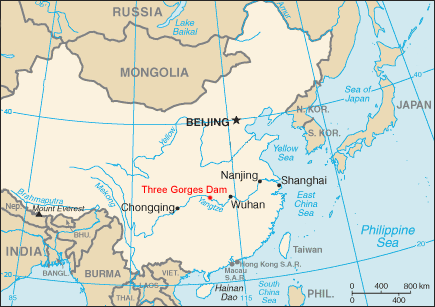Yangtze Patrol: Difference between revisions
Jump to navigation
Jump to search

imported>George Swan (first draft) |
imported>George Swan (add image) |
||
| Line 1: | Line 1: | ||
{{subpages}} | |||
[[Image:Three gorges dam map 2.gif|right|thumb|435px|{{#ifexist:Template:Three gorges dam map 2.gif/credit|{{Three gorges dam map 2.gif/credit}}<br/>|}}Yangtze River, China.]] | |||
The '''Yangtze Patrol''' was part of the [[United States Navy|US Navy]]'s [[Asiatic Squadron]].<ref name=KempTolley> | The '''Yangtze Patrol''' was part of the [[United States Navy|US Navy]]'s [[Asiatic Squadron]].<ref name=KempTolley> | ||
{{cite book | {{cite book | ||
Revision as of 16:22, 21 April 2008
The Yangtze Patrol was part of the US Navy's Asiatic Squadron.[1] Under the unequal treaties the United States, Japan, and various European powers were allowed to cruise China's rivers and coastal waters, protecting their citizens, their property, and their religious missions.
The Yangtze is China's longest river.[1] Ocean-going vessels were able to proceed as far upstream as the cities of Wuhan. Destroyers and Cruisers sometimes served in the YangPat. But the upper Yangtze, and the Yangtze's tributaries were patrolled by specially built river gunboats, like the USS Panay.
The USS Panay was the first American vessel to be sunk by Japanese forces during World War 2.
